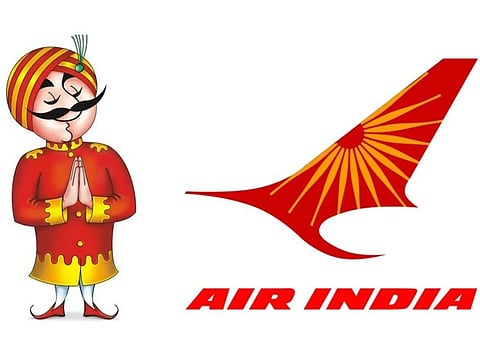Return of Air India to Tata a historic achievement of Narendra Modi government
With the expansion of airline business in India, prospects for new Air India are bright

The return of Air India to its original owners, Tata Sons, will go down as one of the historic achievements of the Narendra Modi government. Old time customers of India’s flagship national carrier have heaved a sigh of relief.
They are enthusiastic about the sale of the loss-making airline and are looking forward to international standards of service, punctuality, and efficiency.
The prospects and possibilities for the new Air India look bright, with the expected exponential expansion of the airline business in India. This is evidenced by the entry of Akasa, a new low-cost airline, promoted by ace investor, Rakesh Jhunjhunwala.
No wonder, rivals and airline industry watchers are cautiously optimistic about the Air India sale. The Tatas, with two other airlines in their kitty, Vistara and Air Asia, already have a strong presence in the Indian skies. If the Tatas can merge all three entities, it will create a new airline behemoth, which might take on the world.
But even without a full-fledged merger, if the three airlines are brought under one umbrella, with smooth and seamless code-shared flights, the aggregation will create enormous traction.
The Tatas are already dominant in the IT sector with their flagship $100 billion plus Tata Consultancy Services (TCS) being the biggest player in India and one of the world leaders in the segment.
If there is one lesson to learn from the re-sale of Air India to the Tatas it is this: the government has no business to be in any business other than governance. The rest should be either privatised or, in some more sensitive areas, a public-private partnership.Makarand R. Paranjape
Tata Sons chairman of the board, Natarajan Chandrasekaran, or Chandru as he is popularly known, being the former Chairman of TCS, says a tech back-end upgrade and sophisticated integrated software solution is on the cards. This will give the new Air India and its partner airlines an edge in a highly competitive market.
But there are some detractors as well. Diehard socialists and unionists are crying foul over the possible loss of jobs and the huge debt that the government has taken on. But these same naysayers and proponents of nationalisation of private assets have no answers when it comes to India’s hundreds of loss-making public sector enterprises.
Golden handshakes and retrenchments to follow
These government-owned companies are a drain on the taxpayer and the exchequer, with tens of thousands of non-working employees still on their rolls, despite the closure of the plants and units they serve. No surprise that some of the employees of Air India have called for a strike. As per the terms of the agreement, all the current staff will be retained for a year by the new owners of Air India. But after that, golden handshakes and retrenchments are only to be expected.
Air India has a fleet of 117 aircraft, with 1500 pilots, 2000 engineers, around 9000 employees plus thousands of contract workers. The total debt of the company exceeds a whopping Rs61,000 crores. Of this, the government has taken on Rs46,000 crores of debt, with Tata Sons assuming responsibility for about Rs. 15,000 crores.
In addition, the fresh capital infusion of Rs2400 crores was the bidding price of the Tatas for the airline, considerably higher than SpiceJet’s Ajai Chowdhary led second highest bid of Rs1500 crores.
People who don’t understand disinvestment will scream at the top of their lungs that the Modi government sold Air India to the Tatas for a song. A company with a brand name, history, several prime assets all over the world, including masterpieces of modern Indian art. But this would be clearly a distortion of the facts.
The truth is that in the last ten years alone, the government had put in Rs1.1 lakh crores to underwrite the recurring losses of Air India. Much of these costs went into debt servicing. The airline itself, though almost breaking even, was losing Rs20 crores a day! Indeed, had the sale had happened much earlier, as recommended by the Arvind Panagariya led Niti Ayog committee, the government could have saved thousands of crores.
If there is one lesson to learn from the re-sale of Air India to the Tatas it is this: the government has no business to be in any business other than governance. The rest should be either privatised or, in some more sensitive areas, a public-private partnership.
Within a decade of its founding on 15 October 1932, the Tatas made Air India one of the best airlines in the world, with legendary service, symbolised by the courteous bow of its mascot, the famous Maharaja. On the brink of its return to its original owners, it had become one of the worst carriers in the world.
Government interference and mismanagement, not to mention alleged corrupt practices by earlier regimes to downgrade Air India in order to promote private players, had brought it to brink of ruin. By biting the bitter bullet, the Modi administration has now righted a wrong.
We all have wonderful memories of Air India. As a long-standing frequent flyer, I remember a complimentary upgrade from business to first class on a Delhi-New York-Delhi trip while still a young man. The superb food and service, with excellent lounge and limo services made the flight both restful and memorable.
But what was special for me was the non-anxious, familiar feel, like never having left your home, let alone country, while travelling abroad.
I hope that sense of quiet pride and fulfilment soon returns as Air India blazes a new trail in the friendly skies.
Sign up for the Daily Briefing
Get the latest news and updates straight to your inbox








